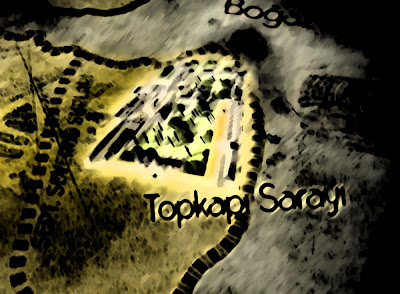Istanbul is the city of 3 religions and 2 continents.
The very first settlement of the city was in Kadıköy by the Greeks from the Megara. On this first hill the Acropol was built and it is when the Byzantium was established.
The ancient city expanded and became double its size with Constantine who actually built the plans of the new city himself building thick walls all around it.
In 203 AD the Severus Hippodrome was built, and the area outside the Hippodrome became the center of the peninsula and was known as the old city of Istanbul. The zero counting point of all roads, the million stone, was placed in the center of Istanbul, so that also was the center of the world.
The Buyuk Saray, also known as the Sacred Palace, was located in the ancient Istanbul from 330 to 1081 AD and served as the main royal residence of the Eastern Roman or Byzantine Emperors.
In the 5th century Emperor Theodosius the II built 6 km thick stone defensive walls outside the old city and so protected Constantinople for more than 1000 years.
After Christianity was imposed churches started replacing paganist temples. That is the time when Hagia Sophia was first built. Of course it went through many phases and catastrophes before the final masterpiece we know was built. The current building was originally constructed as a church between 532 and 537 on the orders of the Byzantine Emperor Justinian and was the third Church of the Holy Wisdom to occupy the site, the previous two having both been destroyed by rioters. It was designed by Isidore of Miletus, a physicist, and Anthemius of Tralles, a mathematician. Hagia Sophia was the first basilica church with a dome built in only 5 years and 10 months.
New needs for water in the city imposed the building of the Bozdogan Kemeri (The Valens Aqueduct). Completed by Roman Emperor Valens in the late 4th century AD, it was restored by several Ottoman Sultans, and is one of the most important landmarks of the city.
In 1453 after the fall of Constantinople, everything changed, its religion, culture, architecture, even its own reason for existence. After that Istanbul would be re-shaped by the hands of Sultan Ahmed the conqueror. He converted every church into a mosque but it is said that Christians had the right to worship freely.
Sultan Ahmed’s mosque, also known as blue mosque, chose as a place the region where the Greek orthodox patriarch and the Holly Apostols used to be. Mimar Sinan, the architect, walked the seven hills and selected the third to build the mosque. Its acoustics are magnificent. It is said that while Sinan was building the mosque he was smoking the water pipe so that by listening to the bubbling sound of the water he could create those unique acoustics. This area became a prestigious residential area. After the earthquake of 1509 stone was forbidden for building, so wood constructions started to appear. This fact changed totally the image of the region and gave it a very distinctive architecture.
Sultan Ahmed wanted to form the big city he dreamt. At first he focused on population. So trying to make Istanbul a Turkish Islamic city in terms of population he brought migrants from Anatolia. Those who came brought also with them the names of their towns, naming region in Istanbul after them.
He also encouraged Turkish, Greek and Armenian communities to settle in the city so that he could create a colorful mosaic of population. He was also aiming for the variety of different religions so that Istanbul would become the cultural, political and commercial center of the world.
Istanbul was also the center of critical commercial roads: the Silk Road, the Spice Road and the Wheat Road.
An important trading center, the biggest in the city, Kapalıçarş or Grand Bazaar, was built in 1461. Actually its construction began in the Byzantium period to be enlarged in the period of Sultan Ahmed, reaching its full prestige during the Ottoman period.
The construction the Topkapi saray began in 1459 and was the official and primary residence in the city of the Ottoman Sultans for approximately 400 years (1465-1856) of their 624-year reign. It was like a castle within a castle, a city within the city. The Harem which was divided in three sections was the world of the unknown, the inaccessible world.
Dolma Bahce Palace, the new palace of the Emperor was built in 1853 on the third hill. Sulleymanya old harem moved there with their ottoman families taking with them the palace culture.
images source:
images source:












No comments:
Post a Comment